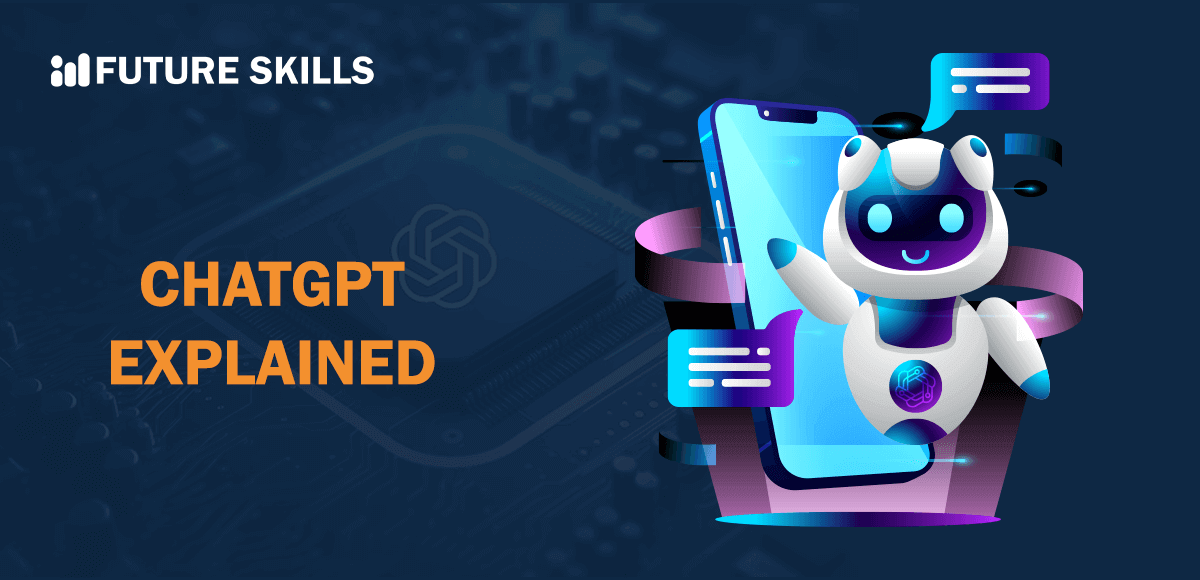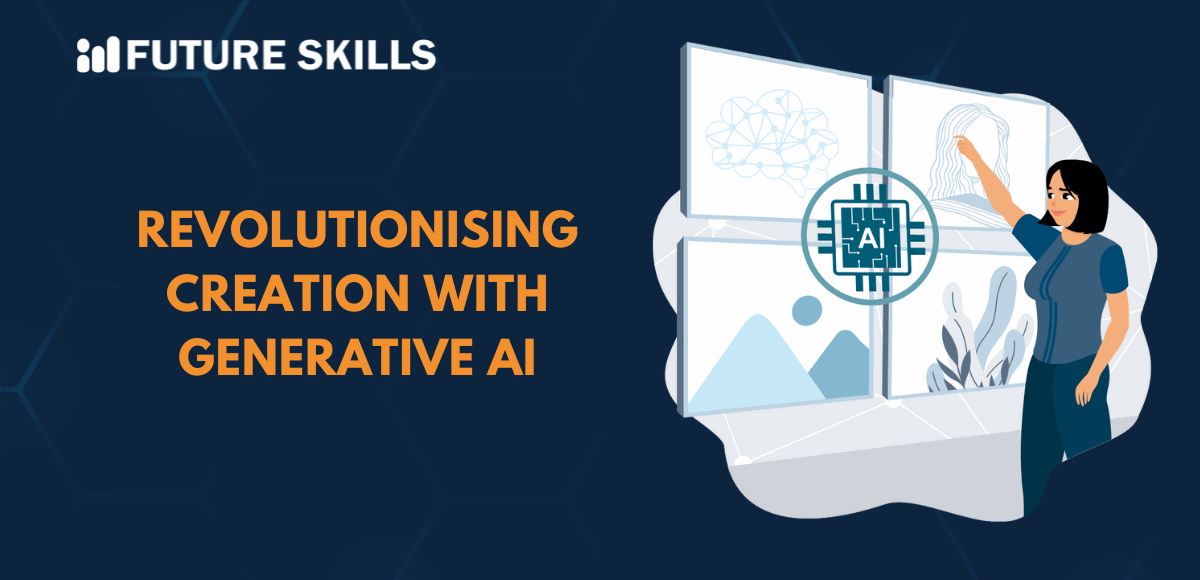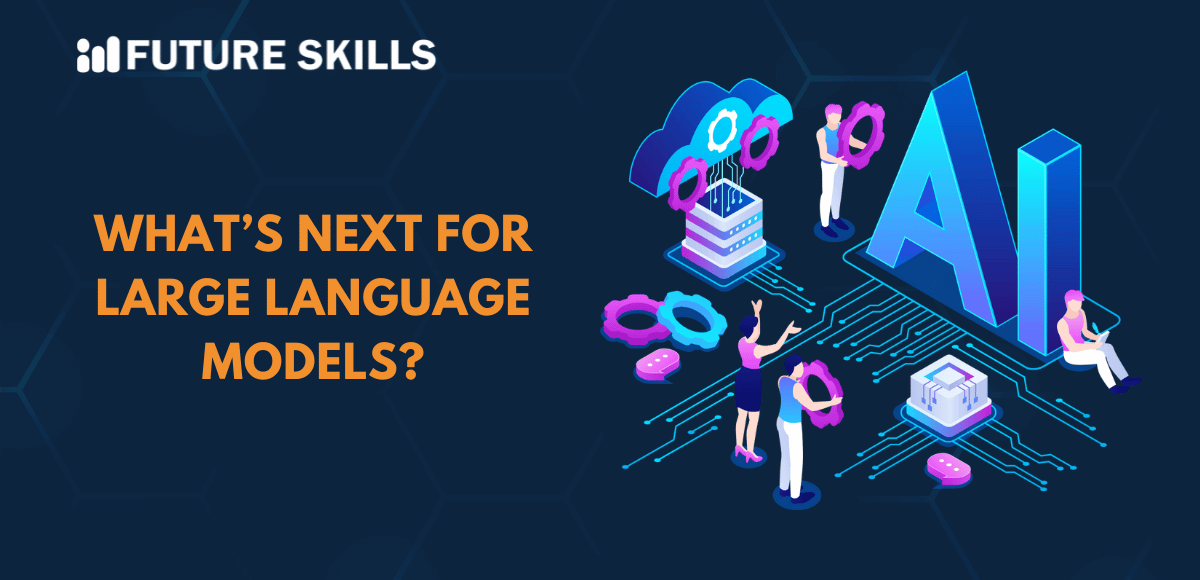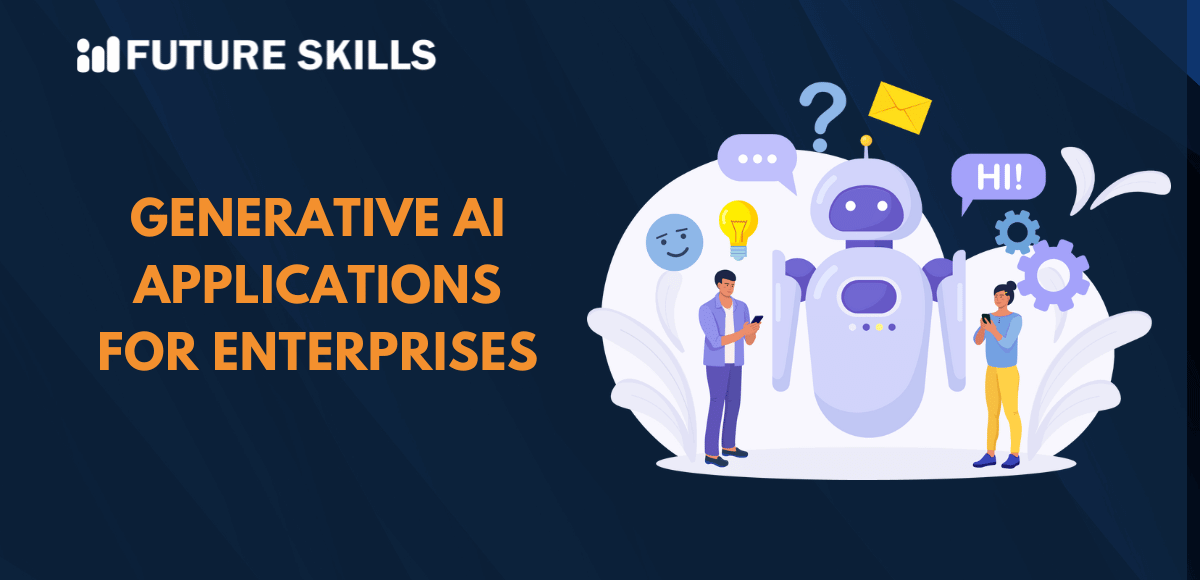Artificial intelligence solutions have witnessed a massive surge in popularity in recent years. People have been wondering about the effectiveness of results with AI self-portraits, writing tools, or text-to-image generators. OpenAI sent ripples throughout the world in November 2022 with the launch of ChatGPT. Is ChatGPT the future? Are you eager to learn more about ChatGPT? In this guide, discover the best way to grasp ChatGPT fundamentals quickly.
The meteoric expansion in volume of searches for terms like “ChatGPT fundamentals” and “ChatGPT explained for beginners” indicates the impact of ChatGPT on the world. It is an innovative application of artificial intelligence, which has been trained to identify the context suggested by humans in different questions. Most of the discussions about ChatGPT draw references to its ability to answer questions with human-like responses.
The potential of ChatGPT for disrupting the conventional precedents of human-computer interaction is a major highlight for the AI ecosystem. People want to learn ChatGPT and its applications in different industries as well as its impact on the future. The following post offers you an introduction to ChatGPT with a detailed overview of its benefits and limitations. On top of it, you can also learn about the steps for using ChatGPT and creating prompts.
Become a certified ChatGPT expert and learn how to utilize the potential of ChatGPT that will open new career paths for you. Enroll in Certified ChatGPT Professional (CCGP)™ Certification.
The Definition of ChatGPT
When you hear the term ‘ChatGPT,’ you are most likely to think about ‘What is ChatGPT’ and reasons behind its popularity. ChatGPT is an AI language model, also known as a large language model, which functions as a chatbot. It uses the GPT-3.5 model, which is an AI algorithm for training ChatGPT. Generative Pre-trained Transformer or GPT model is a characteristic highlight of ChatGPT and ensures powerful features.
ChatGPT could interact with users like a normal conversation with another human and could predict the next word in a sequence. Furthermore, Reinforcement Learning with Human Feedback, or RLHF, offers an additional layer for training the AI model. RLHF utilizes human feedback to improve its knowledge of different topics and generate satisfactory responses for humans.
Working of ChatGPT
The next crucial highlight in the introductory guide to ChatGPT would point at its working. You can explore a ChatGPT user guide for learning about the best practices for using the AI language model in different contexts. The core element in the working of ChatGPT is the Generative Pre-trained Transformer model. It is a machine-learning model which utilizes a massive amount of data to generate an effective response.
ChatGPT relies on deep learning for generating human-like text by leveraging transformer neural networks. The transformer model can help in predicting text, such as the next word or a complete paragraph, according to the general sequence of its training data. Before you learn how to use ChatGPT, you must know that it starts training by using generic data and gradually progresses towards customizing data according to the specific task. ChatGPT uses training with online text for learning the human language and utilizes transcripts for learning the fundamental aspects of conversations.
Human trainers could offer conversations and help in ranking the responses by the AI language model. Users can offer their feedback by clicking on the upvote or downvote options near the answer. ChatGPT also offers the flexibility of offering written feedback for fine-tuning future communications.
Level up your ChatGPT skills and kickstart your journey towards superhuman capabilities with Free ChatGPT and AI Fundamental Course.
What are the Uses of ChatGPT?
The applications of ChatGPT are the next prominent highlight in understanding the fundamentals of the AI language model. You can explore the wide range of Chat GPT features and identify the versatile applications of the AI chatbot. Interestingly, people all over the world have come up with some creative ways to utilize the AI application.
Some of the most popular use cases of ChatGPT include coding computer programs, creating social media posts, and drafting emails. It can help you generate summaries from articles, presentations, and podcasts, as well as solve math problems for you. You can use ChatGPT to explain different complex topics or create product descriptions within a few seconds.
You can improve your understanding of ‘What is ChatGPT?’ by referring to the following examples of ChatGPT use cases in the real world.
- ChatGPT can help you in creating original jokes.
- Artists can use ChatGPT for composing music or generating artwork.
- Programmers can capitalize on the power of AI for writing, debugging, and learning about code with detailed explanations.
- You can write essays on any topic and create content in multiple languages.
- ChatGPT can help you in searching for jobs and offer you a customized resume alongside guidance for qualifying job interviews.
Enroll now in the AI for Business Course to understand the role and benefits of AI in business and the integration of AI in business.
Does ChatGPT have any limitations?
The description of ChatGPT as a powerful AI tool suggests that it might be a robot with knowledge of everything in the world. However, ChatGPT is still a tool developed by humans, and it has some limitations. The best way to learn ChatGPT would be to follow an unbiased approach and look at its limitations. You can find some of the noticeable limitations with ChatGPT, such as failure to understand the complexity of human language. Here are some of the other challenges you can come across with the use of ChatGPT.
ChatGPT does not have any knowledge of the events and data after 2021, as the training data ended in 2021. Therefore, it could provide incorrect responses to questions about events after 2021. In addition, it could return an inaccurate response when it does not understand the query.
The abundance of Chat GPT features might also hide the fact that it could sound unnatural and similar to a machine. It predicts the next word and utilizes words repetitively which could make the content more robotic. You should invest your efforts in reviewing the content generated by ChatGPT to ensure that it looks more natural.
Another prominent limitation associated with ChatGPT is the impact of inaccuracies. It does not have any capabilities for analytics or understanding statistics and how they are related to each other. ChatGPT would mention statistics in the content randomly without offering any references or sources.
You could also come across the problems of ChatGPT emphasizing the wrong aspect of a question. Most of the advertisements about ChatGPT explained in the mainstream media propagate the fact that it can understand the context behind the questions. It has a long way to go before it can interpret the emotions underlying the questions of a user.
Level up your AI skills and embark on a journey to build a successful career in AI with our Certified AI Professional (CAIP)™ program.
Ethical issues with ChatGPT
The important highlights in a guide to ChatGPT would also point at the limitations associated with ethical issues. ChatGPT could help in addressing different tasks and also poses ethical implications, such as bias, cheating, and lack of security. Here are some of the most prominent ethical issues you could find in the applications of ChatGPT.
-
Plagiarism and Cheating
The possibilities for using ChatGPT instructions to plagiarize text can present formidable ethical concerns. ChatGPT can also serve unethical purposes such as cheating, spreading misinformation, and impersonation. Teachers have frequently complained about the use of ChatGPT for cheating, writing, and plagiarizing papers. Interestingly, ChatGPT features an AI text classifier for differentiating between AI text and human text. On top of it, you can also find new online tools for determining the likelihood of the content being written by AI.
ChatGPT can also help malicious agents in creating malware with the coding capabilities of the AI language model. Similarly, ChatGPT has the capability to impersonate an individual by training to learn their writing style and language expression. Subsequently, the chatbots could impersonate a trusted person and collect sensitive information. It also presents the possibility of using ChatGPT to spread misinformation.
-
Bias for Training Data
The ethical issues in using ChatGPT also point to the possibilities for bias in the training data. First of all, you must notice that ChatGPT works according to the data it has been trained on. Therefore, any errors or biases in programming the model could reflect in the output. You can also refer to a ChatGPT user guide to discover how it can fail in understanding discriminatory or offensive statements. It is important to review the training data to avoid any bias alongside introducing diverse material for controlling bias.
-
Privacy Concerns
ChatGPT utilizes text according to inputs, thereby increasing the possibility of revealing sensitive information. The output of ChatGPT could help in tracking and profiling individuals through data collection from prompts. For example, ChatGPT prompts can be programmed to obtain information about the phone number and emails of different users.
-
Replacement of Jobs and the Human Element
ChatGPT has emerged as a major tool for automation of different tasks that must be completed by humans. However, the use of ChatGPT for such tasks implies that it can replace the jobs of millions of people. Therefore, the need for important resources to learn ChatGPT should also emphasize the need to learn about the impact of AI on different jobs. It is important to learn how ChatGPT can help in supporting different job roles alongside the effect of ChatGPT on creating new job opportunities.
Excited to understand the crucial requirements for developing responsible AI and the implications of privacy and security in AI, Enroll now in the Ethics of Artificial Intelligence (AI) Course
Steps for Using ChatGPT
The most crucial question for people interested in learning about ChatGPT is the outline of steps for using ChatGPT. Here are the simple steps you must follow if you want to learn how to use ChatGPT in different applications.
-
Start by Creating your Free OpenAI Account
The first step is to access the official website of OpenAI, which offers you the facility to register your account. You can use an email address or your Microsoft or Google account and then create your account on OpenAI website. If you are a new user, you can use the ‘Sign up’ button and follow the ChatGPT instructions for creating your account. It is also important to remember that OpenAI needs a valid phone number for verifying an account on the website.
-
Accept the Terms and Conditions of ChatGPT
The second step for using ChatGPT involves accepting the terms and conditions of ChatGPT. You will find a few disclaimers, which you have to read in detail and accept to begin the conversation with the chatbot.
-
Understand the Components in the UI of ChatGPT
The responses for ‘how to use ChatGPT’ would also involve a review of the important components in the user interface of the AI chatbot. You can find the ‘New chat’ and ‘Hide sidebar’ buttons alongside the history of all your conversations in the left sidebar. ChatGPT also offers the option to review details of your account and settings for the account.
It also showcases the questions or prompts which you can offer to the AI chatbot. On top of it, the responses of ChatGPT are available in a dedicated section with the upvote and downvote options. The user interface of ChatGPT instructions also shows the option for regenerating the response. It includes a text area where you can enter the desired prompts and questions.
Want to gain practical skills in using OpenAI API and implementing API calls to facilitate LLM interactions, Enroll now in the Certified Prompt Engineering Expert (CPEE)™ Certification.
How Can You Create Prompts?
Once you have gained access to an account on OpenAI, you can use ChatGPT with the help of different prompts. The variety of questions you can ask ChatGPT depends on your creativity. You need to learn about different examples of prompts for using ChatGPT in diverse use cases. The powerful Chat GPT features can help you design prompts with simple words and your imagination. Here are some examples of prompts you can use with ChatGPT.
- Find the vulnerabilities in this piece of code.
- What is the workflow for storing and processing information on a computer?
- Create a plugin that can offer timely updates from news channels.
- Write a poem in honor of soldiers in the style of a popular band.
There are many other examples of ChatGPT prompts that you can implement to leverage the true potential of ChatGPT.
Conclusion
The review of basic concepts about ChatGPT explained in simple terms shows that you can learn about the AI chatbot with little effort. It is important to recognize the necessity of adapting to the use of ChatGPT to ensure that you can prepare for future jobs. On top of it, you could also learn about the important limitations and ethical issues associated with using ChatGPT. The best practices for using ChatGPT not only focus on following the instructions specified by OpenAI but also on the advantages of a flexible user interface. Start learning more about ChatGPT and create your first prompt now.





